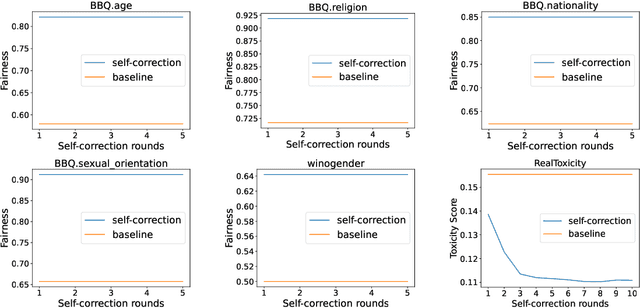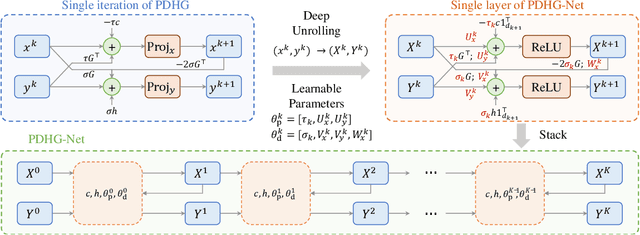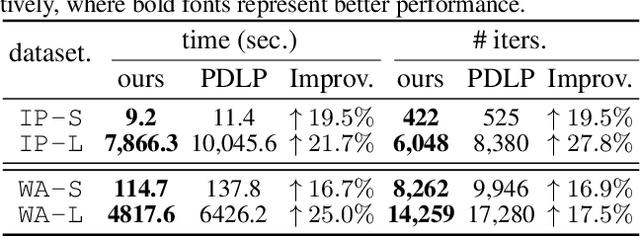Haitao Mao
One Model for One Graph: A New Perspective for Pretraining with Cross-domain Graphs
Nov 30, 2024



Abstract:Graph Neural Networks (GNNs) have emerged as a powerful tool to capture intricate network patterns, achieving success across different domains. However, existing GNNs require careful domain-specific architecture designs and training from scratch on each dataset, leading to an expertise-intensive process with difficulty in generalizing across graphs from different domains. Therefore, it can be hard for practitioners to infer which GNN model can generalize well to graphs from their domains. To address this challenge, we propose a novel cross-domain pretraining framework, "one model for one graph," which overcomes the limitations of previous approaches that failed to use a single GNN to capture diverse graph patterns across domains with significant gaps. Specifically, we pretrain a bank of expert models, with each one corresponding to a specific dataset. When inferring to a new graph, gating functions choose a subset of experts to effectively integrate prior model knowledge while avoiding negative transfer. Extensive experiments consistently demonstrate the superiority of our proposed method on both link prediction and node classification tasks.
Do Neural Scaling Laws Exist on Graph Self-Supervised Learning?
Aug 20, 2024



Abstract:Self-supervised learning~(SSL) is essential to obtain foundation models in NLP and CV domains via effectively leveraging knowledge in large-scale unlabeled data. The reason for its success is that a suitable SSL design can help the model to follow the neural scaling law, i.e., the performance consistently improves with increasing model and dataset sizes. However, it remains a mystery whether existing SSL in the graph domain can follow the scaling behavior toward building Graph Foundation Models~(GFMs) with large-scale pre-training. In this study, we examine whether existing graph SSL techniques can follow the neural scaling behavior with the potential to serve as the essential component for GFMs. Our benchmark includes comprehensive SSL technique implementations with analysis conducted on both the conventional SSL setting and many new settings adopted in other domains. Surprisingly, despite the SSL loss continuously decreasing, no existing graph SSL techniques follow the neural scaling behavior on the downstream performance. The model performance only merely fluctuates on different data scales and model scales. Instead of the scales, the key factors influencing the performance are the choices of model architecture and pretext task design. This paper examines existing SSL techniques for the feasibility of Graph SSL techniques in developing GFMs and opens a new direction for graph SSL design with the new evaluation prototype. Our code implementation is available online to ease reproducibility on https://github.com/GraphSSLScaling/GraphSSLScaling.
Intrinsic Self-correction for Enhanced Morality: An Analysis of Internal Mechanisms and the Superficial Hypothesis
Jul 21, 2024



Abstract:Large Language Models (LLMs) are capable of producing content that perpetuates stereotypes, discrimination, and toxicity. The recently proposed moral self-correction is a computationally efficient method for reducing harmful content in the responses of LLMs. However, the process of how injecting self-correction instructions can modify the behavior of LLMs remains under-explored. In this paper, we explore the effectiveness of moral self-correction by answering three research questions: (1) In what scenarios does moral self-correction work? (2) What are the internal mechanisms of LLMs, e.g., hidden states, that are influenced by moral self-correction instructions? (3) Is intrinsic moral self-correction actually superficial? We argue that self-correction can help LLMs find a shortcut to more morally correct output, rather than truly reducing the immorality stored in hidden states. Through empirical investigation with tasks of language generation and multi-choice question answering, we conclude: (i) LLMs exhibit good performance across both tasks, and self-correction instructions are particularly beneficial when the correct answer is already top-ranked; (ii) The morality levels in intermediate hidden states are strong indicators as to whether one instruction would be more effective than another; (iii) Based on our analysis of intermediate hidden states and task case studies of self-correction behaviors, we are first to propose the hypothesis that intrinsic moral self-correction is in fact superficial.
A Pure Transformer Pretraining Framework on Text-attributed Graphs
Jun 19, 2024



Abstract:Pretraining plays a pivotal role in acquiring generalized knowledge from large-scale data, achieving remarkable successes as evidenced by large models in CV and NLP. However, progress in the graph domain remains limited due to fundamental challenges such as feature heterogeneity and structural heterogeneity. Recently, increasing efforts have been made to enhance node feature quality with Large Language Models (LLMs) on text-attributed graphs (TAGs), demonstrating superiority to traditional bag-of-words or word2vec techniques. These high-quality node features reduce the previously critical role of graph structure, resulting in a modest performance gap between Graph Neural Networks (GNNs) and structure-agnostic Multi-Layer Perceptrons (MLPs). Motivated by this, we introduce a feature-centric pretraining perspective by treating graph structure as a prior and leveraging the rich, unified feature space to learn refined interaction patterns that generalizes across graphs. Our framework, Graph Sequence Pretraining with Transformer (GSPT), samples node contexts through random walks and employs masked feature reconstruction to capture pairwise proximity in the LLM-unified feature space using a standard Transformer. By utilizing unified text representations rather than varying structures, our framework achieves significantly better transferability among graphs within the same domain. GSPT can be easily adapted to both node classification and link prediction, demonstrating promising empirical success on various datasets.
Text-space Graph Foundation Models: Comprehensive Benchmarks and New Insights
Jun 15, 2024



Abstract:Given the ubiquity of graph data and its applications in diverse domains, building a Graph Foundation Model (GFM) that can work well across different graphs and tasks with a unified backbone has recently garnered significant interests. A major obstacle to achieving this goal stems from the fact that graphs from different domains often exhibit diverse node features. Inspired by multi-modal models that align different modalities with natural language, the text has recently been adopted to provide a unified feature space for diverse graphs. Despite the great potential of these text-space GFMs, current research in this field is hampered by two problems. First, the absence of a comprehensive benchmark with unified problem settings hinders a clear understanding of the comparative effectiveness and practical value of different text-space GFMs. Second, there is a lack of sufficient datasets to thoroughly explore the methods' full potential and verify their effectiveness across diverse settings. To address these issues, we conduct a comprehensive benchmark providing novel text-space datasets and comprehensive evaluation under unified problem settings. Empirical results provide new insights and inspire future research directions. Our code and data are publicly available from \url{https://github.com/CurryTang/TSGFM}.
On the Intrinsic Self-Correction Capability of LLMs: Uncertainty and Latent Concept
Jun 04, 2024Abstract:Large Language Models (LLMs) can improve their responses when instructed to do so, a capability known as self-correction. When these instructions lack specific details about the issues in the response, this is referred to as leveraging the intrinsic self-correction capability. The empirical success of self-correction can be found in various applications, e.g., text detoxification and social bias mitigation. However, leveraging this self-correction capability may not always be effective, as it has the potential to revise an initially correct response into an incorrect one. In this paper, we endeavor to understand how and why leveraging the self-correction capability is effective. We identify that appropriate instructions can guide LLMs to a convergence state, wherein additional self-correction steps do not yield further performance improvements. We empirically demonstrate that model uncertainty and activated latent concepts jointly characterize the effectiveness of self-correction. Furthermore, we provide a mathematical formulation indicating that the activated latent concept drives the convergence of the model uncertainty and self-correction performance. Our analysis can also be generalized to the self-correction behaviors observed in Vision-Language Models (VLMs). Moreover, we highlight that task-agnostic debiasing can benefit from our principle in terms of selecting effective fine-tuning samples. Such initial success demonstrates the potential extensibility for better instruction tuning and safety alignment.
PDHG-Unrolled Learning-to-Optimize Method for Large-Scale Linear Programming
Jun 04, 2024



Abstract:Solving large-scale linear programming (LP) problems is an important task in various areas such as communication networks, power systems, finance and logistics. Recently, two distinct approaches have emerged to expedite LP solving: (i) First-order methods (FOMs); (ii) Learning to optimize (L2O). In this work, we propose an FOM-unrolled neural network (NN) called PDHG-Net, and propose a two-stage L2O method to solve large-scale LP problems. The new architecture PDHG-Net is designed by unrolling the recently emerged PDHG method into a neural network, combined with channel-expansion techniques borrowed from graph neural networks. We prove that the proposed PDHG-Net can recover PDHG algorithm, thus can approximate optimal solutions of LP instances with a polynomial number of neurons. We propose a two-stage inference approach: first use PDHG-Net to generate an approximate solution, and then apply PDHG algorithm to further improve the solution. Experiments show that our approach can significantly accelerate LP solving, achieving up to a 3$\times$ speedup compared to FOMs for large-scale LP problems.
Cross-Domain Graph Data Scaling: A Showcase with Diffusion Models
Jun 04, 2024Abstract:Models for natural language and images benefit from data scaling behavior: the more data fed into the model, the better they perform. This 'better with more' phenomenon enables the effectiveness of large-scale pre-training on vast amounts of data. However, current graph pre-training methods struggle to scale up data due to heterogeneity across graphs. To achieve effective data scaling, we aim to develop a general model that is able to capture diverse data patterns of graphs and can be utilized to adaptively help the downstream tasks. To this end, we propose UniAug, a universal graph structure augmentor built on a diffusion model. We first pre-train a discrete diffusion model on thousands of graphs across domains to learn the graph structural patterns. In the downstream phase, we provide adaptive enhancement by conducting graph structure augmentation with the help of the pre-trained diffusion model via guided generation. By leveraging the pre-trained diffusion model for structure augmentation, we consistently achieve performance improvements across various downstream tasks in a plug-and-play manner. To the best of our knowledge, this study represents the first demonstration of a data-scaling graph structure augmentor on graphs across domains.
Graph Machine Learning in the Era of Large Language Models
Apr 23, 2024Abstract:Graphs play an important role in representing complex relationships in various domains like social networks, knowledge graphs, and molecular discovery. With the advent of deep learning, Graph Neural Networks (GNNs) have emerged as a cornerstone in Graph Machine Learning (Graph ML), facilitating the representation and processing of graph structures. Recently, LLMs have demonstrated unprecedented capabilities in language tasks and are widely adopted in a variety of applications such as computer vision and recommender systems. This remarkable success has also attracted interest in applying LLMs to the graph domain. Increasing efforts have been made to explore the potential of LLMs in advancing Graph ML's generalization, transferability, and few-shot learning ability. Meanwhile, graphs, especially knowledge graphs, are rich in reliable factual knowledge, which can be utilized to enhance the reasoning capabilities of LLMs and potentially alleviate their limitations such as hallucinations and the lack of explainability. Given the rapid progress of this research direction, a systematic review summarizing the latest advancements for Graph ML in the era of LLMs is necessary to provide an in-depth understanding to researchers and practitioners. Therefore, in this survey, we first review the recent developments in Graph ML. We then explore how LLMs can be utilized to enhance the quality of graph features, alleviate the reliance on labeled data, and address challenges such as graph heterogeneity and out-of-distribution (OOD) generalization. Afterward, we delve into how graphs can enhance LLMs, highlighting their abilities to enhance LLM pre-training and inference. Furthermore, we investigate various applications and discuss the potential future directions in this promising field.
Addressing Shortcomings in Fair Graph Learning Datasets: Towards a New Benchmark
Mar 09, 2024



Abstract:Fair graph learning plays a pivotal role in numerous practical applications. Recently, many fair graph learning methods have been proposed; however, their evaluation often relies on poorly constructed semi-synthetic datasets or substandard real-world datasets. In such cases, even a basic Multilayer Perceptron (MLP) can outperform Graph Neural Networks (GNNs) in both utility and fairness. In this work, we illustrate that many datasets fail to provide meaningful information in the edges, which may challenge the necessity of using graph structures in these problems. To address these issues, we develop and introduce a collection of synthetic, semi-synthetic, and real-world datasets that fulfill a broad spectrum of requirements. These datasets are thoughtfully designed to include relevant graph structures and bias information crucial for the fair evaluation of models. The proposed synthetic and semi-synthetic datasets offer the flexibility to create data with controllable bias parameters, thereby enabling the generation of desired datasets with user-defined bias values with ease. Moreover, we conduct systematic evaluations of these proposed datasets and establish a unified evaluation approach for fair graph learning models. Our extensive experimental results with fair graph learning methods across our datasets demonstrate their effectiveness in benchmarking the performance of these methods. Our datasets and the code for reproducing our experiments are available at https://github.com/XweiQ/Benchmark-GraphFairness.
 Add to Chrome
Add to Chrome Add to Firefox
Add to Firefox Add to Edge
Add to Edge